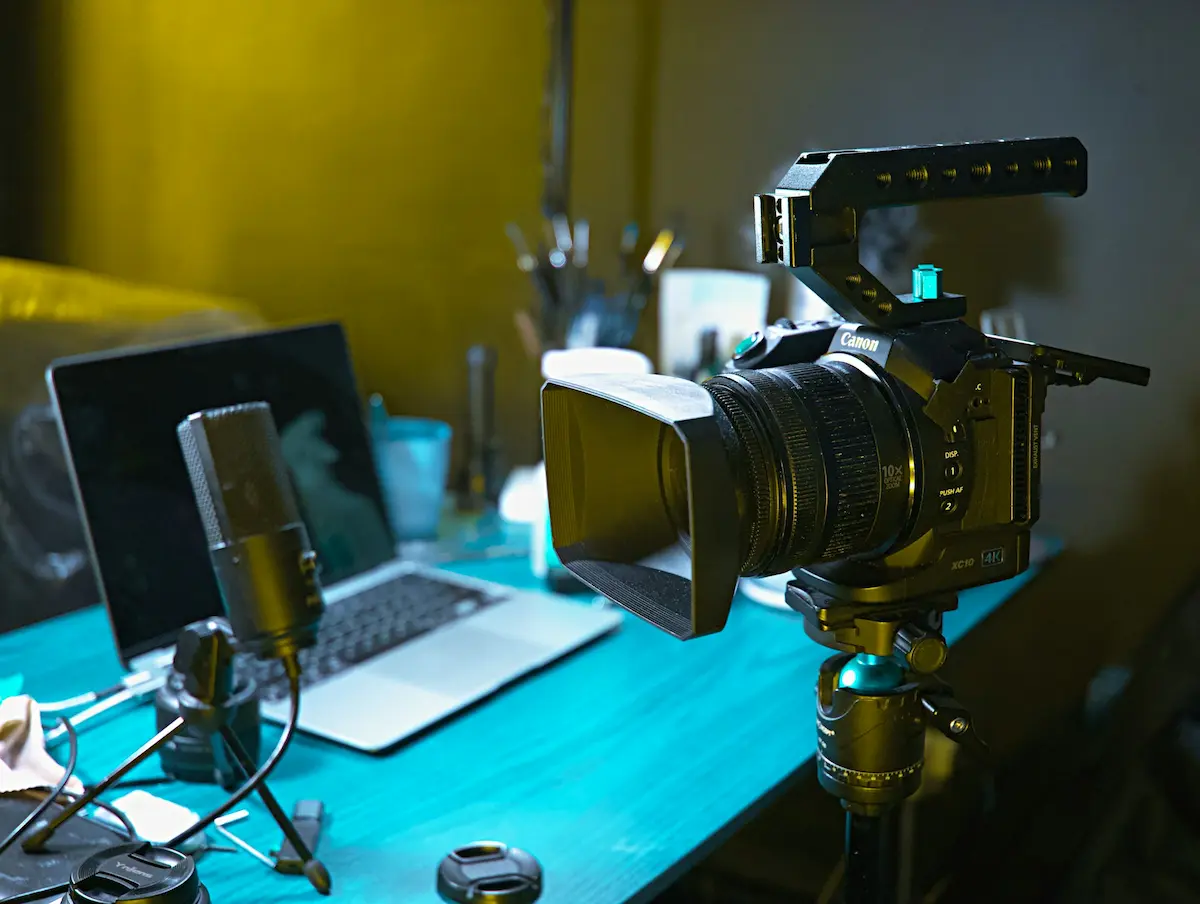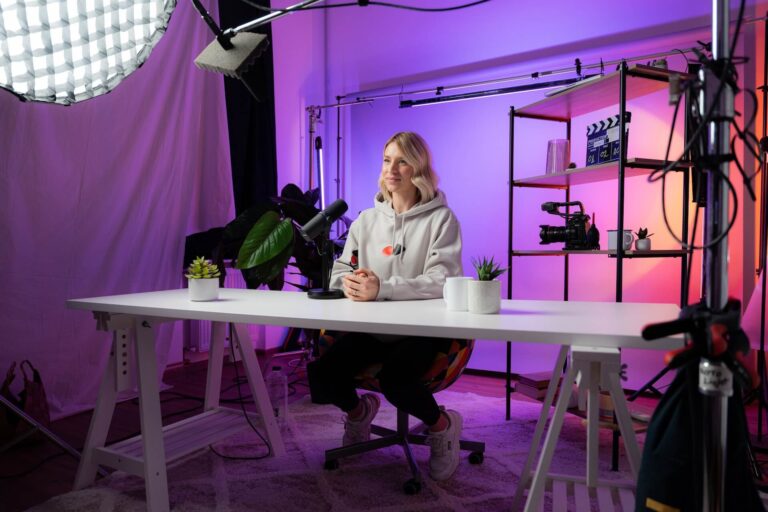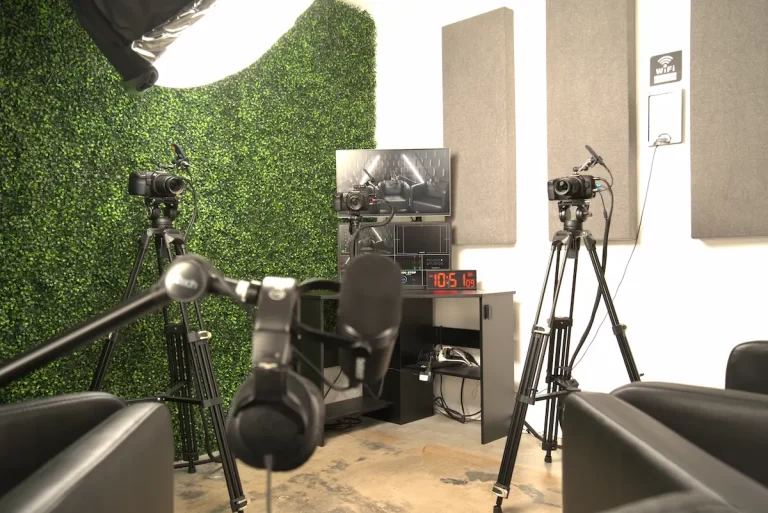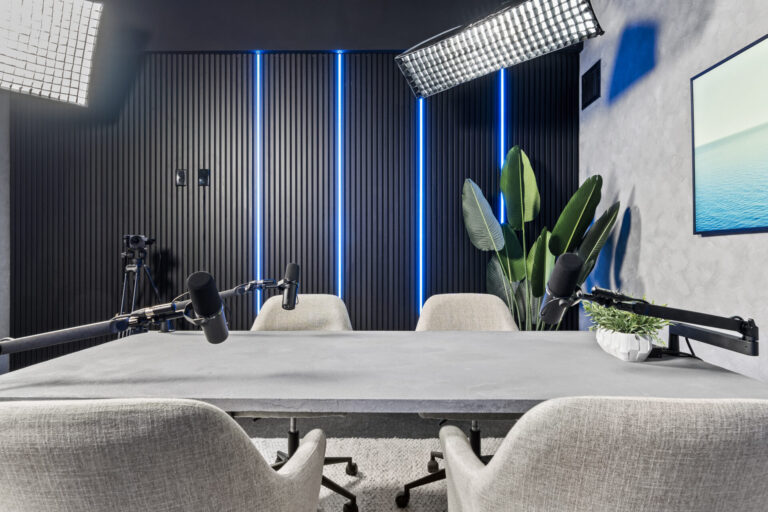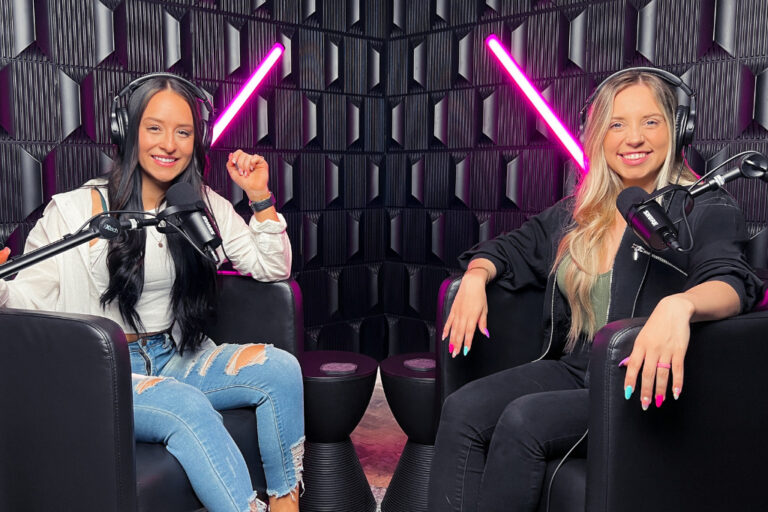Unleashing Your Voice: How To Start a Podcast on YouTube
Podcasting on YouTube has several advantages. First of all, YouTube is a popular platform with a massive user base, so your podcast has the potential to reach a wide audience.
Plus, YouTube offers a visually engaging medium for podcasting, allowing you to incorporate visuals and enhance the overall listening experience.
And let’s not forget about YouTube’s search and recommendation algorithms, which can help increase the discoverability of your podcast.
When you start a podcast on YouTube, you get to tap into the existing YouTube community and leverage its audience.
This can help you grow your podcast faster and attract more listeners. And the best part? YouTube offers monetization options like ads and sponsorships, giving you potential revenue streams for your podcast.
On top of that, you get access to analytics and insights that can help you understand your audience better and tailor your content accordingly.
But here’s the thing: understanding your niche is crucial when podcasting on YouTube. By identifying a specific topic or theme for your podcast, you can attract a targeted audience and stand out in the crowded podcasting landscape.
When you truly understand your niche, you can create content that resonates with your audience and build a loyal following.
Plus, knowing your niche allows you to differentiate yourself from other podcasts and establish yourself as an authority in your chosen area.
Setting the Stage
There are a few things you can do to set the stage for your podcast.
Choosing a Unique Podcast Name
First, brainstorm a list of potential podcast names that really capture your content and target audience.
Think about using keywords or catchy phrases that truly resonate with the theme of your podcast. Also, don’t forget to do some research to make sure your chosen name is unique and not already in use.
Designing Eye-catching Cover Art
Now, when it comes to creating a visually appealing podcast cover, you have a couple of options. You can either hire a professional graphic designer or use design software to do it yourself.
Make sure to incorporate elements that truly represent the essence of your podcast and catch the viewer’s attention.
Remember to use vibrant colors, attractive fonts, and relevant imagery to make your cover art really stand out.
Crafting an Engaging Podcast Description
When it comes to writing your podcast description, keep it concise and compelling. You want to capture the essence of your show in just a few sentences.
Furthermore, you must ensure you highlight the unique value and benefits of listening to your podcast. Lastly, remember to include keywords and phrases that are relevant to your target audience to improve discoverability.
Essential Gear and Software
When it comes to getting great audio recordings, choosing the right microphone is key. You’ll want to think about factors like the type of microphone (dynamic, condenser, ribbon), how it responds to different frequencies, the direction it picks up sound from, and what kind of connections it offers.
Once you’ve got your recordings, you’ll need audio editing software to fine-tune them. There are some popular options out there like Adobe Audition, Pro Tools, Logic Pro, and Audacity.
Each one has its own unique features and learning curve, so it’s important to find the one that fits your needs and skill level.
And don’t forget about quality headphones! They’re essential for accurate monitoring and really listening to your audio during production.
Closed-back headphones help block out external noise, while open-back headphones give you a more natural sound.
Remember to consider things like frequency response, comfort, and durability when choosing the right pair for you.
YouTube-Specific Considerations
When it comes to YouTube, it’s all about optimizing your podcast for the visual medium. So, think about adding engaging visuals like relevant images or video clips to enhance the viewer’s experience.
And hey, make sure to format your podcast in a way that’s visually appealing and easy to follow on the video platform.
Thumbnails are also crucial! They’re super important for attracting viewers to your podcast on YouTube.
Therefore, create some eye-catching thumbnails that accurately represent your podcast’s content. Use high-quality images, bold text, and vibrant colors to grab people’s attention and get them clicking on your podcast.
To really boost the visibility of your podcast on YouTube, you gotta understand and implement some YouTube SEO strategies.
Start by doing some keyword research to find those relevant and popular search terms related to your podcast. Then, strategically incorporate those keywords into your video titles, descriptions, and tags.
That way, you’ll improve your podcast’s discoverability and reach a wider audience. Also, encourage engagement from your viewers through likes, comments, and shares.
Those interactions tell YouTube that your podcast is valuable and relevant. So, get those conversations going!
Planning Your Content
When you’re planning your content, it’s crucial to think about your target audience. Who are you trying to reach?
Understanding your audience’s demographics, interests, and preferences will help you create content that really resonates with them.
Another thing to consider is outlining your episodes to maintain consistency. By doing this, you can organize your ideas, structure your content, and ensure a smooth flow from one episode to the next.
Plus, having a clear outline can help you maintain a consistent format and style throughout your content.
Storytelling continues to be very powerful when it comes to content creation. By incorporating storytelling techniques, you can really engage your audience on a deeper level, evoke emotions, and make your content more memorable.
So, go ahead and use compelling narratives, relatable characters, and vivid descriptions to captivate your audience and deliver your message effectively.
Recording and Editing
Setting Up Your Recording Space:
When it comes to recording audio, there are several key factors to consider for achieving optimal sound quality:
Choosing a Quiet and Well-insulated Room
Selecting a room with minimal external noise and good soundproofing ensures that unwanted sounds won’t interfere with your recordings. Look for a space where you can control the ambient noise levels to create a peaceful environment.
Positioning the Microphone for Optimal Sound Capture
Proper microphone placement plays a crucial role in capturing clear and accurate audio. Experiment with different positions and angles to find the sweet spot that captures the desired sound while minimizing unwanted background noise.
Reducing Background Noise with Acoustic Treatment
Applying acoustic treatment to your recording space can significantly improve the overall sound quality. This may include using sound-absorbing panels, diffusers, and bass traps to minimize echoes and reverberations, resulting in cleaner and more professional recordings.
By paying attention to these details, you can ensure that your audio recordings are of the highest possible quality, free from distractions and background noise.
Tips for Professional Podcast Editing
Removing background noise and unwanted sounds is a crucial step in audio production. By using advanced noise reduction techniques, we can ensure a clean and professional sound.
Additionally, enhancing audio quality with equalization and compression can bring out the best in recordings, making them sound more balanced and polished.
To further enhance the listening experience, we can add carefully selected music, sound effects, and transitions, creating a captivating audio journey that keeps the audience engaged from start to finish.
Balancing Audio Levels and Quality
When it comes to adjusting volume levels, it’s important to ensure a consistent audio experience throughout the podcast.
This can be achieved by using noise gates and limiters to effectively control the dynamic range. Additionally, monitoring and fine-tuning the audio quality plays a crucial role in delivering a polished final product that captivates the audience and keeps them engaged from start to finish.
Branding Your Podcast
When it comes to your podcast, it’s really important to establish a cohesive brand image. This means creating a consistent visual identity with a cool logo and color scheme that really represents what your podcast is all about.
Don’t forget to use social media platforms to promote your podcast and connect with your audience. Share episodes, and behind-the-scenes stuff, and interact with your listeners to build a loyal following.
Oh, and make sure you have an engaging and memorable podcast introduction that really captures the essence of your show. You can have a catchy theme song, give a quick summary of what listeners can expect, and throw in a little hook to keep them listening.
Publishing and Promoting
When it comes to publishing and promoting your content, choosing the right hosting platform is key. You want to consider factors like ease of use, customization options, and how many people you can reach.
YouTube is a powerful platform for sharing your content with a wide audience. You’ll need to learn how to upload your videos, optimize your titles and descriptions, and engage with your viewers to make the most impact.
Social media platforms are also a great way to promote your content and connect with your target audience. Take some time to explore strategies for using platforms like Facebook, Twitter, and Instagram to reach even more people and build a strong online presence.
Monetization Strategies
If you’re looking to monetize your content, one effective way is to explore sponsorship opportunities.
You can collaborate with brands and companies that align with your content, which can provide a sustainable source of income. It’s worth reaching out to potential sponsors and showcasing the value you can offer to their target audience.
Another way to monetize your podcast is through listener support models like Patreon. By offering exclusive content, rewards, and building a sense of community for your dedicated fans, you can encourage them to support your work through monthly subscriptions or one-time donations.
It’s also a good idea to explore other platforms that offer similar models to diversify your revenue streams.
If you’re creating content on YouTube, it’s crucial to stay updated with the platform’s monetization policies.
Make sure you familiarize yourself with the guidelines and requirements to ensure compliance and maximize your earning potential.
There are different monetization options available, such as ads, channel memberships, and merchandise shelves, so you can optimize your revenue generation on YouTube.
Measuring Success
Understanding views, likes, and comments is crucial to gauge how well your videos are performing.
By tracking audience retention and watch time, you can assess how engaged your viewers are with your content. It’s also important to analyze traffic sources and demographics to better target your audience and optimize your content accordingly.
These insights help you make data-driven decisions and improve the overall success of your video strategy.
To foster interaction and connect with your audience, encourage viewers to leave comments and share their thoughts.
Don’t forget to respond to comments and engage in conversations to build a sense of community. Conducting surveys or polls to gather feedback and preferences is another great way to involve your audience.
Use analytics insights to identify areas of improvement and gain valuable data-driven insights into video performance.
Experiment with different video formats, styles, or topics based on data analysis to determine the most engaging content for your audience.
And remember to continuously optimize video titles, descriptions, and thumbnails to enhance visibility and maximize click-through rates. This way, your videos will stand out and capture viewers’ attention.
Collaborations and Networking
Building connections with fellow podcasters can be really beneficial in many ways! It opens up opportunities for potential collaborations, sharing knowledge and experiences, and even cross-promotion.
So, how can you start? Well, reach out to other podcasters in your niche through social media platforms, podcasting communities, or by attending podcasting conferences.
Here’s another tip: consider being a guest on other podcasts or inviting guests to your own show.
This can help you expand your audience and bring fresh perspectives to your episodes. Plus, collaborating with other podcasters to cross-promote each other’s episodes is a great way to share your content with their audience and vice versa.
Lastly, don’t forget the value of attending podcasting events like conferences, workshops, or meetups.
These events provide fantastic networking opportunities where you can meet fellow podcasters, industry experts, and even potential guests or sponsors.
To stay updated on upcoming events, make sure to be a part of podcasting communities, social media groups, or podcasting associations.
So, go ahead and start building those connections! Happy podcasting!
Summary
In conclusion, starting a podcast on YouTube involves several key steps: defining your podcast’s purpose and target audience, planning and creating engaging content, setting up your podcasting equipment, and effectively promoting your podcast on social platforms.
We hope these guidelines have empowered and encouraged you to dive into the fascinating world of podcasting.
Remember, the beginning may seem daunting, but the journey is incredibly rewarding. In podcasting, there’s always room for innovation and growth.
We’re excited to see the unique voice and value you’ll bring to the podcasting community. Here’s to the start of your incredible podcasting journey!

